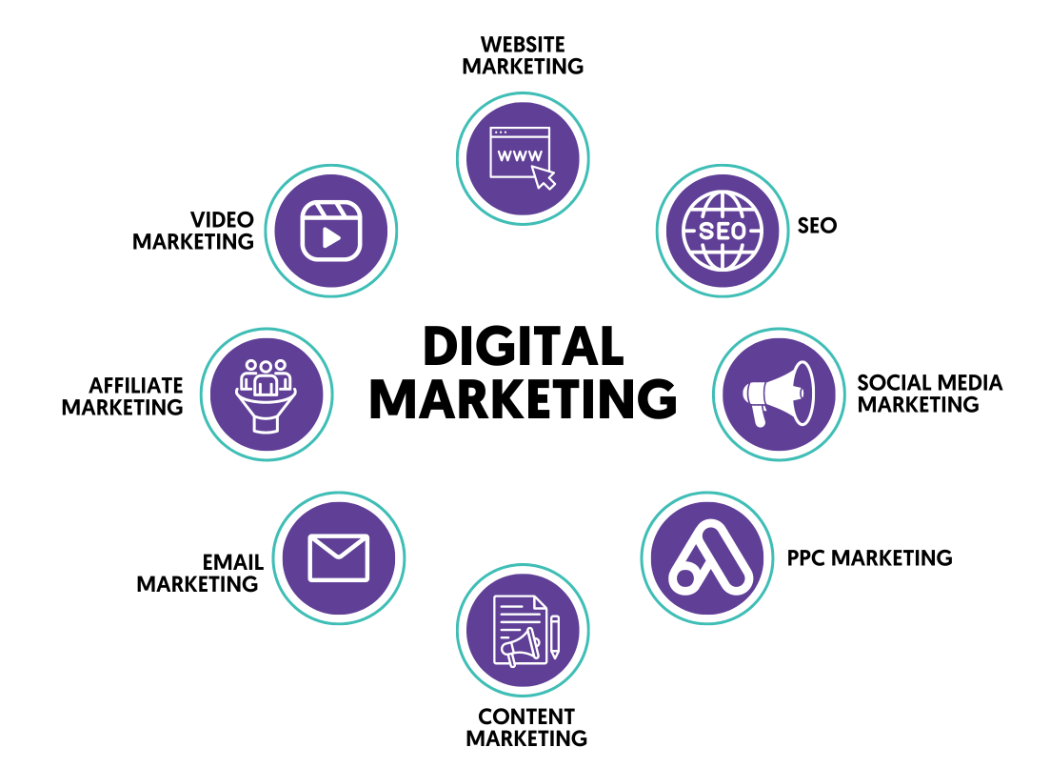Mastering the Art of Engagement: Strategies for Success in 2024
In the fast-paced, ever-evolving world of digital marketing, staying ahead of trends is crucial for businesses looking to engage their audience and drive growth. As we progress through 2024, the digital marketing landscape continues to transform, driven by advancements in technology, changes in consumer behavior, and emerging trends. This blog delves into key strategies that businesses can adopt to master the art of engagement and achieve digital marketing success in 2024.
1. Embrace the Power of Personalisation
Personalisation is no longer just a buzzword; it has become a fundamental expectation from consumers. In 2024, audiences are increasingly seeking experiences that resonate with their individual preferences, needs, and behaviors. Businesses that can deliver personalised experiences are more likely to capture attention, foster loyalty, and drive conversions.
Dynamic Content Creation: One of the most effective ways to achieve personalisation is through dynamic content. This approach involves creating content that changes based on user behavior, preferences, or demographics. For instance, an e-commerce site might display product recommendations based on a user’s browsing history or previous purchases. Similarly, email campaigns can be tailored with personalised subject lines, offers, and content that align with the recipient’s past interactions with the brand. By delivering relevant content at the right time, businesses can significantly increase their engagement rates.
Customer Segmentation: Personalisation also relies heavily on robust customer segmentation. By dividing your audience into specific segments based on factors such as age, location, purchasing habits, and online behavior, you can create targeted campaigns that speak directly to each group. For example, a fashion retailer might segment its audience by age and style preference, sending different collections and promotions to different groups. This level of specificity ensures that your marketing messages are not only relevant but also resonate deeply with your audience, leading to higher engagement and conversion rates.
Personalised Customer Journeys: Beyond just content, personalisation should extend to the entire customer journey. By mapping out and optimising each touchpoint, from initial contact to post-purchase, businesses can create a seamless and personalised experience that guides customers along the path to conversion. This might include personalised landing pages, tailored recommendations, and follow-up emails that address the customer’s specific needs or interests.
2. Leverage AI and Machine Learning
Artificial Intelligence (AI) and Machine Learning (ML) have become game-changers in the digital marketing landscape. These technologies enable businesses to analyse vast amounts of data, predict trends, and automate processes, all of which contribute to more efficient and effective marketing strategies.
Predictive Analytics: Predictive analytics, powered by AI, allows businesses to forecast customer behavior and identify potential trends before they fully emerge. By analysing historical data, AI can predict what products or services a customer is likely to purchase next, enabling businesses to tailor their marketing efforts accordingly. For instance, an online retailer might use predictive analytics to identify which customers are most likely to respond to a new product launch, allowing them to focus their marketing resources on the highest-value prospects. This proactive approach can help businesses stay ahead of the competition and meet customer demands more effectively.
Chatbots and Virtual Assistants: AI-powered chatbots and virtual assistants are becoming increasingly sophisticated, offering real-time customer support and personalised recommendations. These tools can handle a wide range of tasks, from answering customer inquiries to guiding users through the purchase process, all while collecting valuable data that can be used to refine marketing strategies. For example, a chatbot on a travel website might help users find flights, hotels, and activities based on their preferences and past bookings, providing a more personalised and convenient experience. As AI continues to advance, businesses will be able to offer even more tailored and efficient customer service, further enhancing engagement.
Automated Content Creation: AI is also being used to automate content creation, from generating product descriptions to writing entire articles. While human creativity and oversight are still essential, AI can significantly speed up the content creation process, allowing businesses to produce more content at scale. For example, AI tools can generate blog posts, social media updates, and email newsletters based on pre-defined templates and keywords, freeing up time for marketers to focus on strategy and creativity.
3. Focus on Content Marketing

Content marketing remains a cornerstone of digital marketing success, but the way content is created, distributed, and consumed is continuously evolving. In 2024, content marketing will be more about quality, relevance, and storytelling than ever before.
Interactive Content: Interactive content, such as quizzes, polls, surveys, and interactive infographics, is gaining popularity as it actively engages users and encourages them to participate. This type of content not only captures attention but also provides valuable insights into consumer preferences and behaviors. For example, a fitness brand might use a quiz to help users find the best workout plan based on their goals and lifestyle, creating a more engaging and personalised experience. Interactive content is also highly shareable, increasing its reach and impact.
Video Marketing: Video continues to dominate the digital marketing landscape. From short-form content on platforms like TikTok and Instagram Reels to long-form educational videos on YouTube, video marketing is essential for capturing and retaining audience attention. In 2024, businesses should focus on creating high-quality, visually appealing videos that tell a compelling story and resonate with their target audience. For example, a fashion brand might create a series of behind-the-scenes videos showcasing the design process, giving customers an inside look at how their products are made. Video content can also be repurposed across multiple channels, making it a versatile and cost-effective marketing tool.
Storytelling: Storytelling is at the heart of effective content marketing. By creating narratives that connect with your audience on an emotional level, you can build brand loyalty and encourage customer advocacy. Whether through blog posts, videos, or social media content, your brand’s story should be authentic, relatable, and aligned with your audience’s values and interests. For example, a food brand might share stories about the farmers who grow their ingredients, highlighting their commitment to sustainability and quality. These stories not only engage customers but also differentiate the brand in a crowded market.
Content Diversification: Diversifying your content across different formats and platforms is crucial for reaching a broader audience. In 2024, businesses should explore various content types, including podcasts, webinars, infographics, and user-generated content (UGC). For example, a tech company might host a webinar series on industry trends, while also creating infographics that summarise key takeaways. By offering content in multiple formats, you can cater to different preferences and learning styles, increasing the likelihood of engagement.
4. Optimise for Voice Search

Voice search is becoming increasingly prevalent, thanks to the widespread use of smart speakers and voice assistants like Alexa, Siri, and Google Assistant. As more consumers use voice search to find information, products, and services, businesses must optimise their digital content for this growing trend.
Natural Language Processing: Voice search queries are often longer and more conversational than text searches. To optimise for voice search, businesses should focus on natural language processing (NLP) and incorporate long-tail keywords that reflect how people speak. For example, instead of targeting the keyword “best running shoes,” a business might optimise for “What are the best running shoes for marathons?” By understanding and mimicking the natural language used in voice searches, businesses can improve their chances of appearing in voice search results.
Featured Snippets: Appearing in featured snippets, also known as “position zero,” is crucial for voice search optimization. When a user asks a voice assistant a question, the assistant often reads out the featured snippet. To increase your chances of being featured, create concise, informative content that directly answers common questions related to your industry. For example, a home improvement company might create a blog post answering common questions about DIY projects, with a focus on providing clear, actionable advice. This not only improves your chances of appearing in voice search results but also positions your brand as an authority in your industry.
Local SEO for Voice Search: Local businesses, in particular, should focus on optimising their content for voice search. Voice searches often have a local intent, such as “restaurants near me” or “best coffee shop in [city].” To capture these queries, ensure your business listings are up-to-date with accurate information, including your address, phone number, and hours of operation. Additionally, create location-specific content that addresses common local search queries, such as “best places to visit in [city]” or “top local events this weekend.”
5. Strengthen Social Media Presence
Social media continues to be a powerful tool for connecting with your audience, building brand awareness, and driving engagement. In 2024, businesses should focus on strengthening their social media presence by embracing new platforms, formats, and strategies.
Social Commerce: Social commerce, where products are sold directly through social media platforms, is expected to grow significantly in 2024. Platforms like Instagram, Facebook, and TikTok are increasingly integrating e-commerce features, allowing users to browse and purchase products without leaving the app. Businesses should explore opportunities to integrate e-commerce with their social media channels, making it easier for customers to shop and share products within the platforms they already use. For example, a beauty brand might use Instagram Shopping to showcase products, while also leveraging influencer partnerships to drive traffic and sales.
Authenticity and Transparency: Consumers are increasingly drawn to brands that are authentic and transparent. Social media provides a platform for businesses to showcase their values, behind-the-scenes operations, and customer testimonials. By being open and honest, businesses can build trust and foster deeper connections with their audience. For example, a sustainable fashion brand might share content about their ethical sourcing practices, including interviews with suppliers and workers. This transparency not only builds credibility but also differentiates the brand from competitors.
Community Building: Building a strong community around your brand is essential for long-term success. In 2024, businesses should focus on fostering engagement and interaction within their social media communities. This might involve creating and moderating groups or forums, hosting live events, or encouraging user-generated content. For example, a fitness brand might create a Facebook group where customers can share their progress, ask questions, and support each other. By creating a space where customers can connect and engage with each other, businesses can cultivate loyalty and advocacy.
6. Invest in Data Privacy and Security
As consumers become more aware of data privacy issues, businesses must prioritise data protection and transparency in their digital marketing efforts. In 2024, adhering to data privacy regulations and building customer trust through ethical data practices will be more important than ever.
Compliance with Regulations: Businesses must stay informed about and comply with data privacy regulations such as the General Data Protection Regulation (GDPR) in Europe and the California Consumer Privacy Act (CCPA) in the United States. This includes obtaining explicit consent for data collection, providing clear privacy policies, and offering users control over their data. For example, an e-commerce site might implement a cookie consent banner that allows users to choose which types of cookies they are willing to accept.
Transparency in Data Usage: Being transparent about how you collect, store, and use customer data is crucial for building trust. Clearly communicate your data practices in privacy policies, and ensure that users understand what data is being collected and for what purpose. For example, a SaaS company might include a detailed privacy policy on its website, explaining how customer data is used to improve the product and enhance the user experience.
Investing in Security Measures: Data breaches can have devastating consequences for businesses, both in terms of financial loss and damage to reputation. In 2024, businesses should invest in robust security measures to protect customer data from cyber threats. This might include implementing encryption, multi-factor authentication, and regular security audits. By prioritising data security, businesses can protect their customers and their brand reputation.
Conclusion
Mastering the art of engagement in 2024 requires a deep understanding of the latest digital marketing trends and a commitment to continuous innovation. By embracing personalization, leveraging AI, creating high-quality content, optimizing for voice search, strengthening social media presence, and prioritizing data privacy, businesses can build meaningful connections with their audience and achieve long-term success in the digital landscape. As the year progresses, staying adaptable and responsive to emerging trends will be key to maintaining a competitive edge and driving growth.












